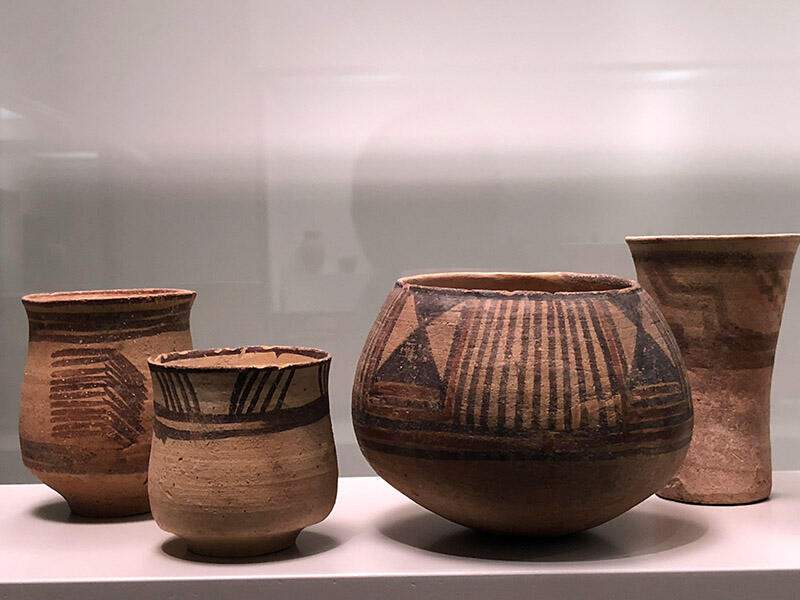Mundigak III (3400-2900 BCE) and IV (2900-2400 BCE) pottery with geometric designs.
Aurore Didier asks in his article The use of colour in the Protohistoric pottery from Pakistani Balochistan and from Mundigak (Afghanistan): Cultural Identities and Technical Traditions: "Distributed from southern Afghanistan to the Pakistani coast and from the Indus Valley to south-eastern Iran, the considered pottery productions show an important stylistical richness and a high craft skill. The attention paid to the polychrome pottery in the Indo-Iranian border-lands is relatively recent (Mugavero & Vidale 2003, Mugavero 2009), even more considering Pakistani Balochistan. The fragility of the pigments and their bad preservation might explain this situation. The considerable amount and the quality of the archaeological remains excavated by the French teams at Mundigak (Afghanistan) (Casal 1961), at Mehrgarh and Nausharo (Kachi-Bolan region, Pakistan) (C. Jarrige & al. 1995; Jarrige 1996) and in Pakistani Makran (Besenval 1997, Didier 2007) allow however to develop further studies (morpho-functional, stylistical and technical analyses) in order to better understand a specific craft tradition (the polychrome painting) developed during one millennium in one of the most dynamic pottery centre in Middle Asia. Can we assess the degree of innovation, development and complexity of the polychrome wares? Can we establish a relationship between the vessel forms, the decorative motifs and the coloured fillings? How can we explain the colour and material choices and the symbolism of cer- tain decorations? What is the role of these productions? On a larger scale, the matter is also to bring to light the outstanding dynamism of the cultural and material interactions in the Indo-Iranian borderlands (Pakistan, south-eastern Iran, north-western India, Afghanistan) and in southern Central Asia during the 4th and the 3rd millennia BC." (p. 138)

